Single-cell multi-omics reveals dyssynchrony of the innate and adaptive immune system in progressive COVID-19
- PMID: 35064122
- PMCID: PMC8782894
- DOI: 10.1038/s41467-021-27716-4
Single-cell multi-omics reveals dyssynchrony of the innate and adaptive immune system in progressive COVID-19
Abstract
Dysregulated immune responses against the SARS-CoV-2 virus are instrumental in severe COVID-19. However, the immune signatures associated with immunopathology are poorly understood. Here we use multi-omics single-cell analysis to probe the dynamic immune responses in hospitalized patients with stable or progressive course of COVID-19, explore V(D)J repertoires, and assess the cellular effects of tocilizumab. Coordinated profiling of gene expression and cell lineage protein markers shows that S100Ahi/HLA-DRlo classical monocytes and activated LAG-3hi T cells are hallmarks of progressive disease and highlights the abnormal MHC-II/LAG-3 interaction on myeloid and T cells, respectively. We also find skewed T cell receptor repertories in expanded effector CD8+ clones, unmutated IGHG+ B cell clones, and mutated B cell clones with stable somatic hypermutation frequency over time. In conclusion, our in-depth immune profiling reveals dyssynchrony of the innate and adaptive immune interaction in progressive COVID-19.
© 2022. The Author(s).
Conflict of interest statement
S.H.K. receives consulting fees from Northrop Grumman. L.E.N. is a founder and shareholder in Humacyte, Inc, which is a regenerative medicine company. Humacyte produces engineered blood vessels from allogeneic smooth muscle cells for vascular surgery. L.E.N.’s spouse has equity in Humacyte, and L.E.N. serves on Humacyte’s Board of Directors. L.E.N. is an inventor on patents that are licensed to Humacyte and that produce royalties for L.E.N. L.E.N. has received an unrestricted research gift to support research in her laboratory at Yale. Humacyte did not fund these studies, and Humacyte did not influence the conduct, description, or interpretation of the findings in this report. N.D.G. is a paid consultant for Tempus Labs and the National Basketball Association. A.I.K. received consulting fees from Tata Sons and Regeneron and is a recipient of grants on COVID-19 from Merck, Regeneron, and Serimmune all of which are outside the submitted work. K.B.H. receives consulting fees from Prellis Biologics. C.D.C. is a recipient of a grant from BMS. A.U. reports personal consulting fees from Boehringer Ingelheim, RemedyCell, Augmanity Nano, and 1E Therapeutics in the last 36 months, and Equity in RemedyCell, all outside the submitted work. D.A.H. has received research funding from Bristol-Myers Squibb, Novartis, Sanofi, and Genentech. He has been a consultant for Bayer Pharmaceuticals, Bristol Myers Squibb, Compass Therapeutics, EMD Serono, Genentech, Juno Therapeutics, Novartis Pharmaceuticals, Proclara Biosciences, Sage Therapeutics, and Sanofi Genzyme. Further information regarding funding is available on:
Figures
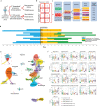
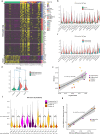
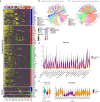

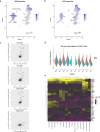

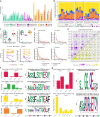


References
-
- WHO. WHO Coronavirus Disease (COVID-19) Dashboard (2021).
-
- Berlin, D. A., Gulick, R. M. & Martinez, F. J. Severe covid-19. N. Engl. J. Med.383, 2451–2460 (2020). - PubMed
Publication types
MeSH terms
Substances
Grants and funding
- R01 HL141852/HL/NHLBI NIH HHS/United States
- I01 BX004661/BX/BLRD VA/United States
- R35 GM143072/GM/NIGMS NIH HHS/United States
- T32 AI007517/AI/NIAID NIH HHS/United States
- P01 AI039671/AI/NIAID NIH HHS/United States
- U19 AI089992/AI/NIAID NIH HHS/United States
- R01 HL126094/HL/NHLBI NIH HHS/United States
- PR181442/Department of Defense
- T15 LM007056/LM/NLM NIH HHS/United States
- R21 LM012884/LM/NLM NIH HHS/United States
- UL1 TR001863/TR/NCATS NIH HHS/United States
- T32 GM136651/GM/NIGMS NIH HHS/United States
- R01 AI104739/AI/NIAID NIH HHS/United States
- F30 HL143906/HL/NHLBI NIH HHS/United States
- P01 AI073748/AI/NIAID NIH HHS/United States
- R01 AI121207/AI/NIAID NIH HHS/United States
- K24 AG042489/AG/NIA NIH HHS/United States
- U01 HL145567/HL/NHLBI NIH HHS/United States
LinkOut - more resources
Full Text Sources
Other Literature Sources
Medical
Molecular Biology Databases
Research Materials
Miscellaneous

